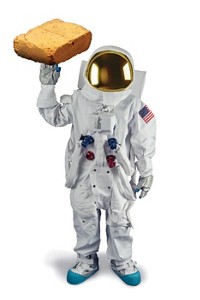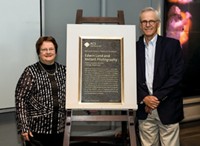Advertisement
Grab your lab coat. Let's get started
Welcome!
Welcome!
Create an account below to get 6 C&EN articles per month, receive newsletters and more - all free.
It seems this is your first time logging in online. Please enter the following information to continue.
As an ACS member you automatically get access to this site. All we need is few more details to create your reading experience.
Not you? Sign in with a different account.
Not you? Sign in with a different account.
ERROR 1
ERROR 1
ERROR 2
ERROR 2
ERROR 2
ERROR 2
ERROR 2
Password and Confirm password must match.
If you have an ACS member number, please enter it here so we can link this account to your membership. (optional)
ERROR 2
ACS values your privacy. By submitting your information, you are gaining access to C&EN and subscribing to our weekly newsletter. We use the information you provide to make your reading experience better, and we will never sell your data to third party members.
Analytical Chemistry
About The Cover
by Bethany Halford
October 9, 2006
| A version of this story appeared in
Volume 84, Issue 41

Otherworldly. That was photographer Mark Thiessen's underlying concept for the photo on the cover of the Oct. 9 issue of C&EN. Thiessen shot this picture of Rick Smalley, along with several other otherworldly images, for "Nano's Big Future," an article in the June 2006 issue of National Geographic.
Faced with the impossible task of taking photographs at the nanoscale, Thiessen decided to realize the nanoworld's alien landscape—where elements morph into unfamiliar versions of themselves—on the human scale.
To capture Smalley, a giant of nanotechnology, the National Geographic photographer wanted to transpose familiar concepts of size. He took most photographers' preferred accessory for the Rice University professor—a buckyball—and supersized it. In the shadow of a 20-foot metal fullerene, Smalley comes down to the molecular scale, so to speak.
The luminous rope, a nod to the Nobel Laureate's energy crusade, is a side-glow fiber optic cable interfaced with a strobe light via a funnel. It was the photo's only light source other than the dusk sky.
Thiessen chose the backdrop of Utah's Bonneville Salt Flats to attain the aura of otherworldliness. The flatland's salt-crusted surface normally glows white, but Thiessen and his crew found about an inch of water upon their arrival. It turned out to be the shoot's greatest hardship, requiring an elaborate setup of elevated extension cords to prevent electrocution. The water left salty films on everything it touched. It corroded Thiessen's tripod.
The photo shoot had originally been scheduled for May 2005, but had to be rescheduled for June when Smalley fell ill. Still, it was an appointment he was determined to keep, traveling from Houston to Wendover, Utah, with his bride, Debbie, just four days after their wedding. "We were basically their honeymoon," Thiessen jokes.
As a staff photographer for National Geographic for nearly a decade, Thiessen has captured many prestigious subjects on film. Even so, Smalley stood out. "He could look right through you," Thiessen says. "I regret that he wasn't around to see the photo in the magazine."




Join the conversation
Contact the reporter
Submit a Letter to the Editor for publication
Engage with us on Twitter